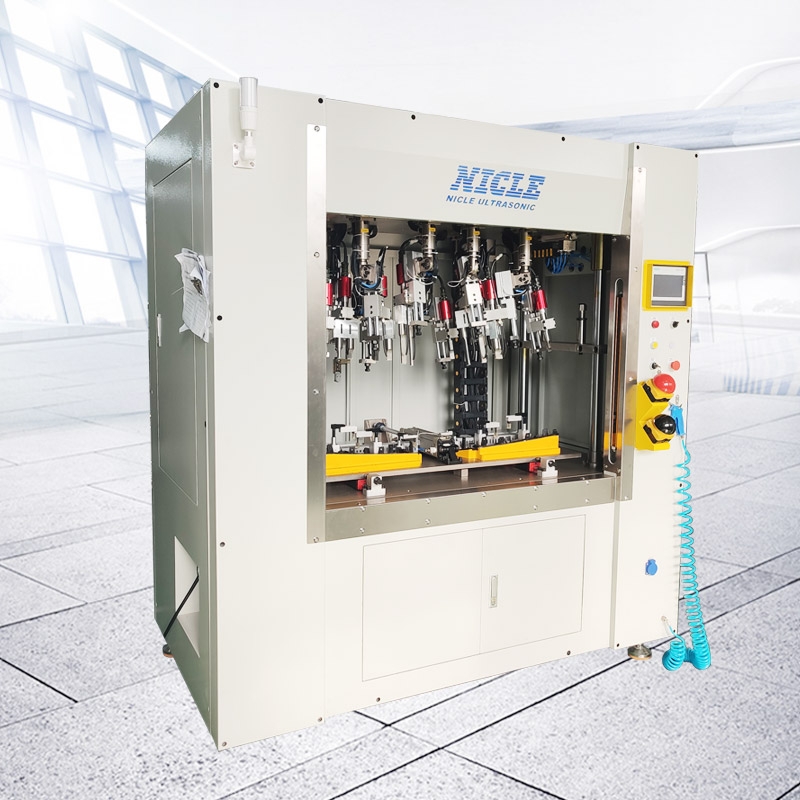Modular design in ultrasonic welder machine manufacturing is reshaping how production equipment is developed, maintained, and upgraded. Instead of fixed, one-size-fits-all machines, manufacturers are creating systems made from interchangeable modules. This approach allows machines to be reconfigured quickly, scaled to match production demand, and adapted to new applications without a complete rebuild.
What Modular Design Means for Ultrasonic Welding
In this context, modular design involves breaking the machine into self-contained functional units—such as power supplies, controllers, transducers, and tooling assemblies—that connect via standard interfaces. Each module can be removed, upgraded, or replaced independently.
This design philosophy is gaining traction because it addresses some of the key pressures facing manufacturers:
-
Shorter product life cycles mean welding equipment must adapt quickly.
-
Customisation demands require flexible assembly processes.
-
Sustainability goals push for longer equipment lifespans and easier part reuse.
Key Principles Driving Modular Design in Ultrasonic Welders
1. Standardised Interfaces
By defining mechanical, electrical, and software connection points, modules can be swapped without complex re-engineering. For example, a horn assembly designed to fit one power module can be replaced with another tuned for a different frequency, minimising downtime.
2. Functional Independence
Each module is built to perform its role without depending on internal changes to other modules. This means a generator upgrade doesn’t require redesigning the actuator or frame.
3. Scalability
Modular ultrasonic welders can be expanded by adding extra welding stations or more powerful generator units. A single-station machine can evolve into a multi-station setup as production needs grow.
4. Serviceability
Maintenance teams can swap faulty modules on the production floor without sending the whole machine away for repair. This reduces production interruptions and extends machine service life.
5. Future-Proofing
New technologies—such as advanced sensors for weld quality monitoring—can be integrated into existing systems by adding compatible modules rather than replacing the entire welder.
Benefits for Manufacturers
Faster Changeovers
Switching between product lines is simpler when weld tooling, control units, and fixtures can be swapped in minutes. This is particularly valuable for industries with varied production runs, such as automotive components or medical devices.
Reduced Downtime
Because modules can be replaced in-house, service calls become faster and cheaper. Some manufacturers even keep critical spare modules onsite, ready for immediate use.
Lower Total Cost of Ownership
Instead of investing in new machines for every product change, companies can reconfigure existing welders. The capital savings over time can be significant.
Sustainability
Reusing base frames and mechanical assemblies while upgrading electronics and tooling reduces waste and resource consumption.
How Modular Design Supports Quality Control
Ultrasonic welding often requires precise control over amplitude, pressure, and time. Modular systems make it easier to integrate specialised process monitoring equipment. For example:
-
Inline sensors can be added to track weld quality in real time.
-
Data logging modules allow for detailed process audits, supporting compliance in regulated industries.
Example Applications
-
Automotive manufacturing: Rapid changeover between welding door panels, instrument clusters, and sensor housings.
-
Medical devices: Meeting strict quality standards by integrating new validation modules without altering the whole system.
-
Consumer electronics: Quickly adapting to product redesigns with minimal re-tooling.
Challenges and Considerations
While modular design offers flexibility, it also requires:
-
Initial planning to ensure interface standards remain consistent across future upgrades.
-
Inventory management for spare modules.
-
Training for operators and maintenance staff to handle module changes correctly.
If these factors are managed well, modular ultrasonic welders can provide decades of service with minimal obsolescence.
Conclusion
The shift toward modular design principles in ultrasonic welder machine manufacturing is transforming how companies invest in and use their production equipment. Flexibility, scalability, and serviceability are no longer optional—they are becoming standard expectations. For manufacturers competing in fast-changing markets, modular welders offer a strategic advantage that extends well beyond the initial purchase.
